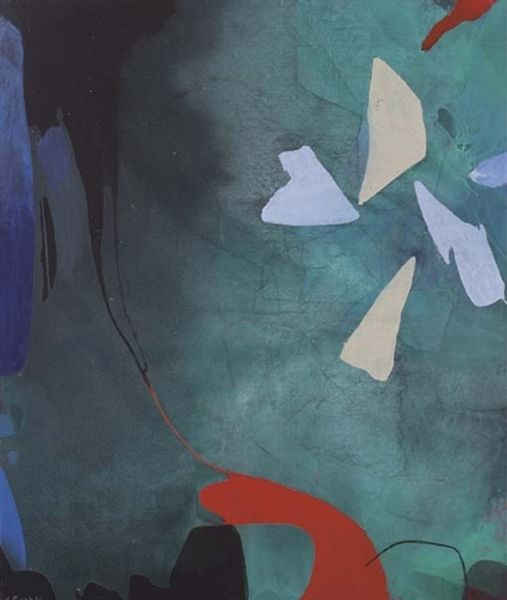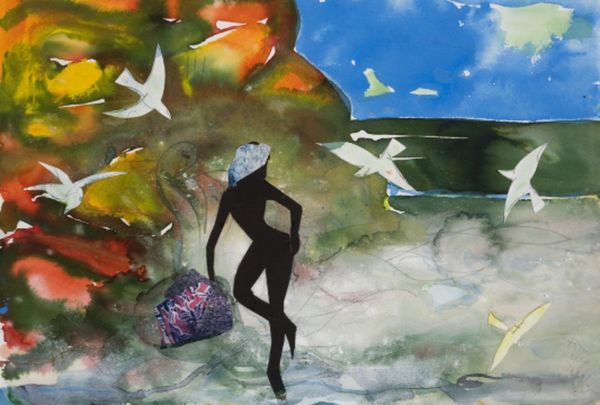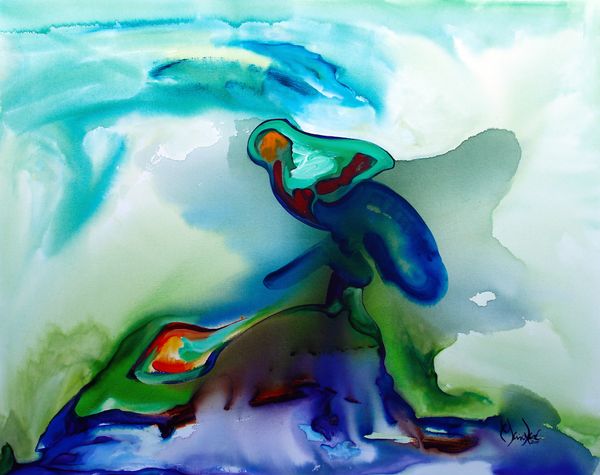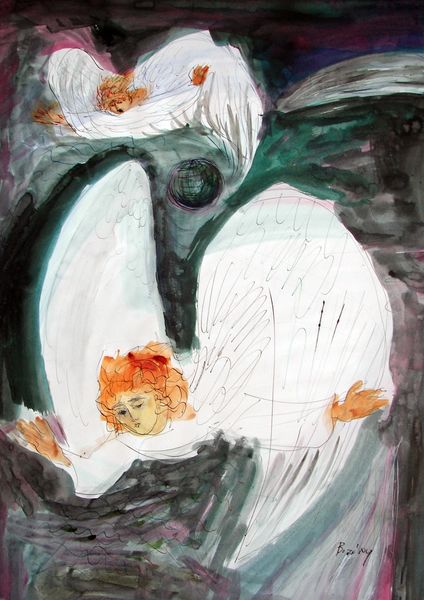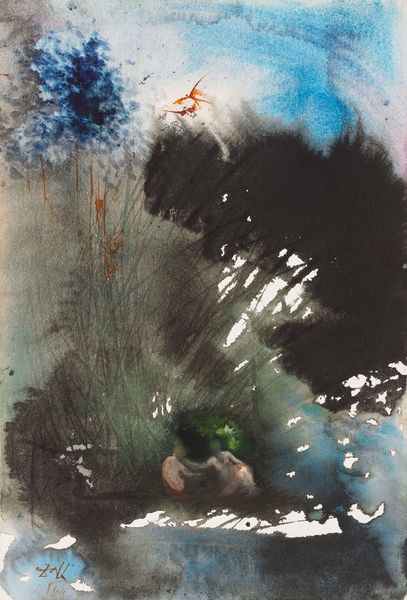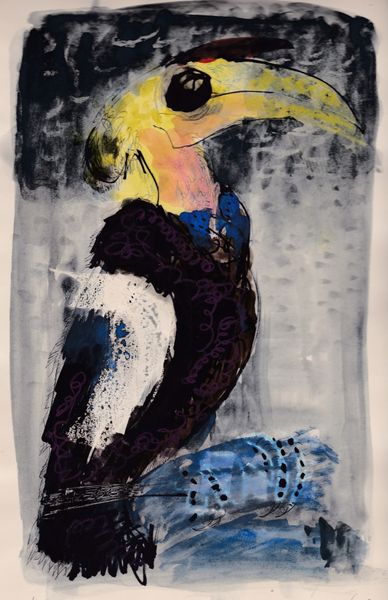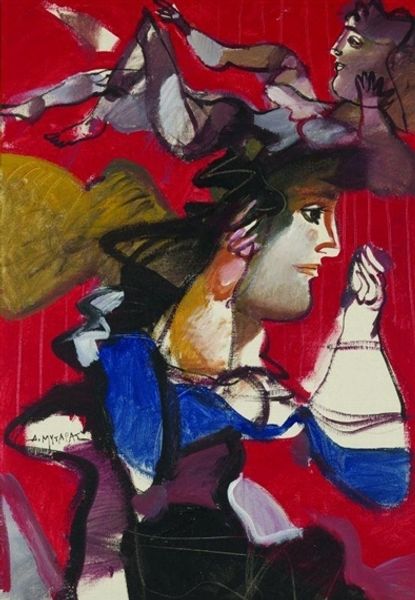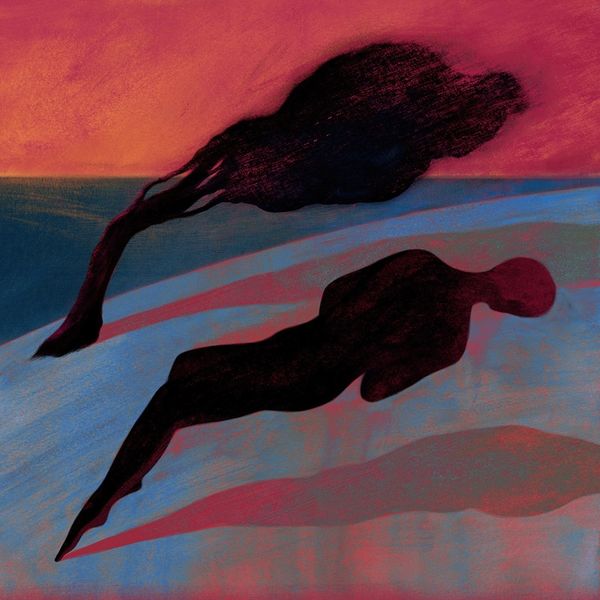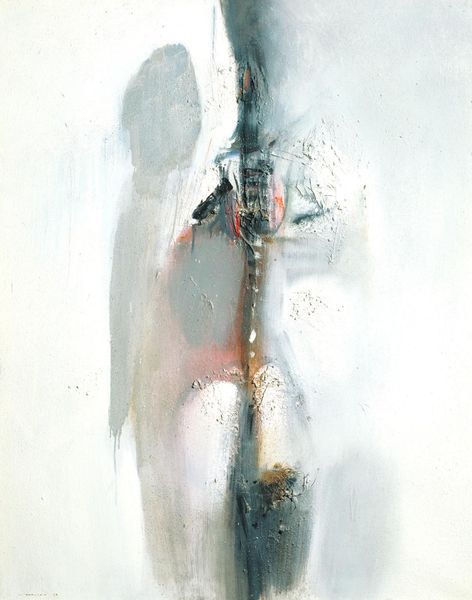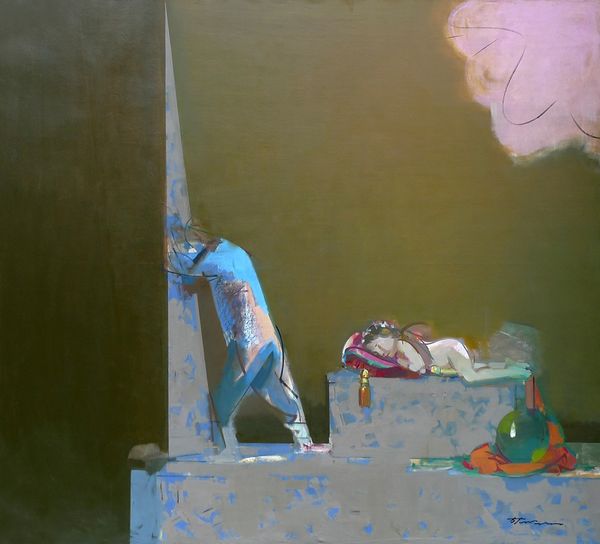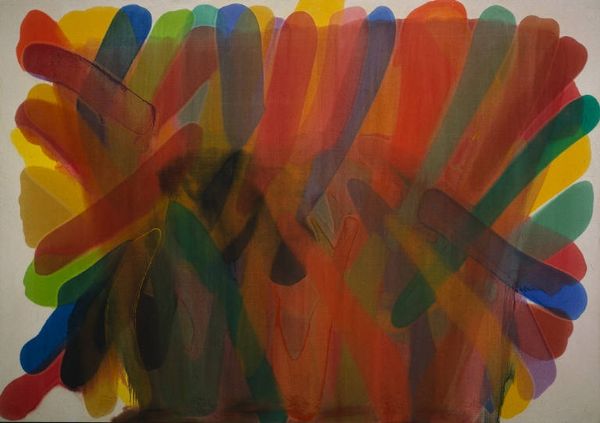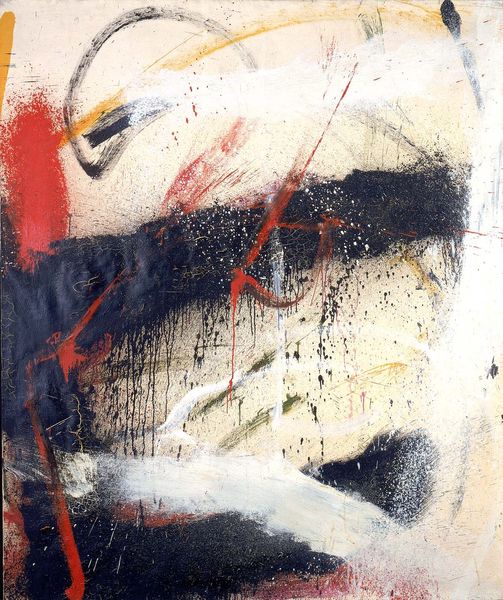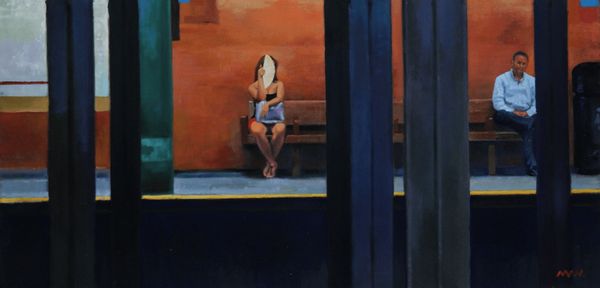
painting, oil-paint
#
portrait
#
painting
#
oil-paint
#
landscape
#
figuration
#
modernism
Copyright: Charles Blackman,Fair Use
Curator: Here we have Charles Blackman's oil painting "Girl on Park Bench," created in 1961. What are your initial impressions? Editor: Bleakness. An unsettling loneliness seems to radiate from the figure despite the park setting, and this feeling largely comes from the almost violent erasure of the girl's face, this void where we expect features. Curator: That sense of vacancy is compelling. Consider the composition. The painting uses simplified forms; see how Blackman contrasts the blocks of color. The girl’s dark silhouette sharply bisects the airy, atmospheric blues and greens of the backdrop. Editor: The absent face pulls focus. In iconography, obscuring the face often represents grief, mystery, or an unwillingness to be seen. Given Blackman's association with the Antipodeans group—artists exploring alienation—the girl’s anonymity becomes more resonant. It is like a rejection of easy identity, maybe even societal pressure, rendered through these raw sweeps of color. Curator: I appreciate your point about iconography. The color itself adds meaning too. The juxtaposition of dark and bright areas around her seems crucial to the work’s emotive power. Editor: Certainly. Blackman could be representing youthful disillusionment, casting her in dark hues against a once-bright background. The park bench as a symbol, as a space for meeting, rest and observation seems now a site of loneliness. The white surrounding could indicate isolation. It suggests winter. Curator: Indeed, but winter allows other elements to come forward. If the composition used softer tones and light it would be lost. There's this constant dialectic going on with Blackman between coldness and the vibrancy of form. Editor: Right. It's a potent representation of isolation, and invites a psychological interpretation about youthful anxieties. Curator: In its formal reduction, in its rawness and color composition, this work moves past just representing angst and becomes an artifact for Blackman's view of figuration and form. Editor: Well, either way, whether it is an arrangement of form or an icon for youthful disillusionment, I won’t be looking at park benches in quite the same way.
Comments
No comments
Be the first to comment and join the conversation on the ultimate creative platform.
